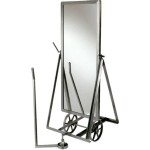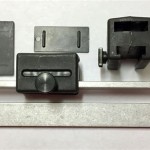Can You Screen Mirror From iPhone to Roku Without Wi-Fi?
Screen mirroring, the ability to wirelessly display the contents of one device's screen onto another, has become increasingly popular. This functionality is often utilized for sharing photos, videos, presentations, and even playing mobile games on a larger display like a television. Roku devices, known for their streaming capabilities, also support screen mirroring, making them a convenient option for sharing content from iPhones. However, standard screen mirroring relies on a Wi-Fi network to facilitate the connection between the two devices. This article explores the feasibility of screen mirroring from an iPhone to a Roku device without a Wi-Fi connection.
The core technology enabling screen mirroring between an iPhone and a Roku device is Apple's AirPlay protocol. AirPlay utilizes a local network, typically Wi-Fi, to transmit audio and video data. Both the iPhone and the Roku device must be connected to the same network for AirPlay to function. This network acts as the conduit through which the iPhone transmits the screen's content to the Roku device for display.
Without a Wi-Fi network, establishing the necessary communication pathway for AirPlay becomes challenging. AirPlay doesn't inherently support direct connections like Bluetooth or peer-to-peer Wi-Fi Direct. Consequently, screen mirroring an iPhone to a Roku without Wi-Fi, in the traditional sense, isn't possible.
Several alternative approaches might be mistakenly considered "Wi-Fi-less" screen mirroring but fundamentally rely on a network connection. One such method involves creating a mobile hotspot from the iPhone itself. In this scenario, the iPhone essentially acts as a portable router, creating a small, localized Wi-Fi network. The Roku can then connect to this hotspot, enabling AirPlay functionality. While seemingly bypassing a traditional Wi-Fi router, this method still utilizes Wi-Fi for data transmission.
Another similar approach involves using a portable router. These compact devices create a dedicated Wi-Fi network, independent of any existing infrastructure. By connecting both the iPhone and Roku to this portable router, users create the necessary network environment for AirPlay. This, again, utilizes Wi-Fi and doesn't represent true Wi-Fi-less mirroring.
Certain third-party apps claim to offer screen mirroring capabilities without Wi-Fi. However, these often require specific hardware configurations or utilize alternative network protocols that emulate Wi-Fi functionality. It's crucial to carefully evaluate such apps, ensuring they are compatible with both the iPhone and Roku device and understanding the underlying technology they employ. Some may use Bluetooth for limited functionality, but this often doesn't support full-quality video streaming.
Wired connections, such as using an HDMI adapter connected to the iPhone and then to the Roku's HDMI input, do not constitute screen mirroring. This method simply duplicates the iPhone's output on the TV, but control remains solely on the iPhone. Screen mirroring, by definition, involves wirelessly transmitting the display content and often maintaining interactivity between the source device and the receiving display.
In situations where traditional Wi-Fi networks are unavailable, alternatives like mobile hotspots and portable routers can provide the necessary network infrastructure for AirPlay. However, these methods still rely on Wi-Fi technology. True screen mirroring from an iPhone to a Roku without any form of wireless networking, leveraging only protocols like Bluetooth or direct device-to-device connections, is not currently supported.
Understanding the underlying technology of AirPlay and the role of Wi-Fi in facilitating its functionality is essential for anyone looking to mirror their iPhone screen to a Roku device. While workarounds exist for scenarios lacking traditional Wi-Fi infrastructure, they ultimately utilize a form of wireless networking to establish the required connection. Exploring alternative applications claiming Wi-Fi-less mirroring requires careful examination of their specifications and underlying technology to ensure compatibility and understand potential limitations.
Future developments in wireless communication protocols might introduce new possibilities for screen mirroring without relying on traditional Wi-Fi. However, within the current technological landscape, establishing the connection necessary for AirPlay between an iPhone and a Roku requires a network, whether it’s a standard Wi-Fi network, a mobile hotspot, or a dedicated portable router.

How To Mirror Iphone Roku Without Wifi 5 Steps With Pictures

How To Mirror Iphone Roku Without Wifi 5 Steps With Pictures

How To Mirror Iphone Roku Tv Without Wifi Vulomedia

How To Mirror Iphone Roku Without Wifi 5 Steps With Pictures

3 Easy Methods How To Mirror Iphone Rokutv Airdroid

How To Mirror Iphone Roku Without Wifi 5 Steps With Pictures

How To Screen Mirror Roku Without Wifi
What Is The Easiest Way To Screen Mirror An Iphone Roku Without Wifi Quora
What Is The Easiest Way To Screen Mirror An Iphone Roku Without Wifi Quora

3 Ways To Mirror Iphone Roku Tv With Without Wi Fi








